The Polish Pink Wine Revolution
During my last trip to Poland in November 2017, I attended the Kraków wine fair, Enoexpo, to talk about the winning rosés from the first International Rosé Championship, which had been held in May, also in Kraków. During the fair, Michał Bardel, the editor of Czas Wina magazine, organised a tasting of Polish rosés for me and introduced me to Monika Bielka-Vescovi. To place my tasting notes for the rosés in context, I asked Monika if she would be happy to contribute. As such, this post has two sections:
- A review of Polish rosé wines by Monika Bielka-Vescovi.
- Tasting notes I wrote from the tasting of Polish rosés.
1. The Polish Pink Wine Revolution
This article is written by Monika Bielka-Vescovi, a dynamic, businesswoman, founder of the Polish Wine School - Szkoła Sommelierów, president of the Polish Women and Wine Association, international wine judge and wine journalist. She teaches about wine at the Jagiellonian University in Kraków, Collegium Civitas in Warsaw and the Sub-Carpathian Wine Academy in Jasło. Previously she was the beverage director and wine trainer at Six Senses Resorts and Spas in Asia and the fine dining manager in Memphis TN, Broomfield & Boulder CO USA. She is currently studying for the Master of Wine and is a Weinakadmieker from the Weinakademie Österreich in Rust, Ambassador of the European Association of Sommeliers in Poland, as well as board member at Confrérie de la Chaîne des Rôtisseurs, Baillage de Pologne and Enchanson de Pologne. In 2015 she was recognised as one of 25 females that inspire small business success by Twój Styl magazine and in 2017 she was awarded the best female entrepreneur award by Law Business Quality Magazine.
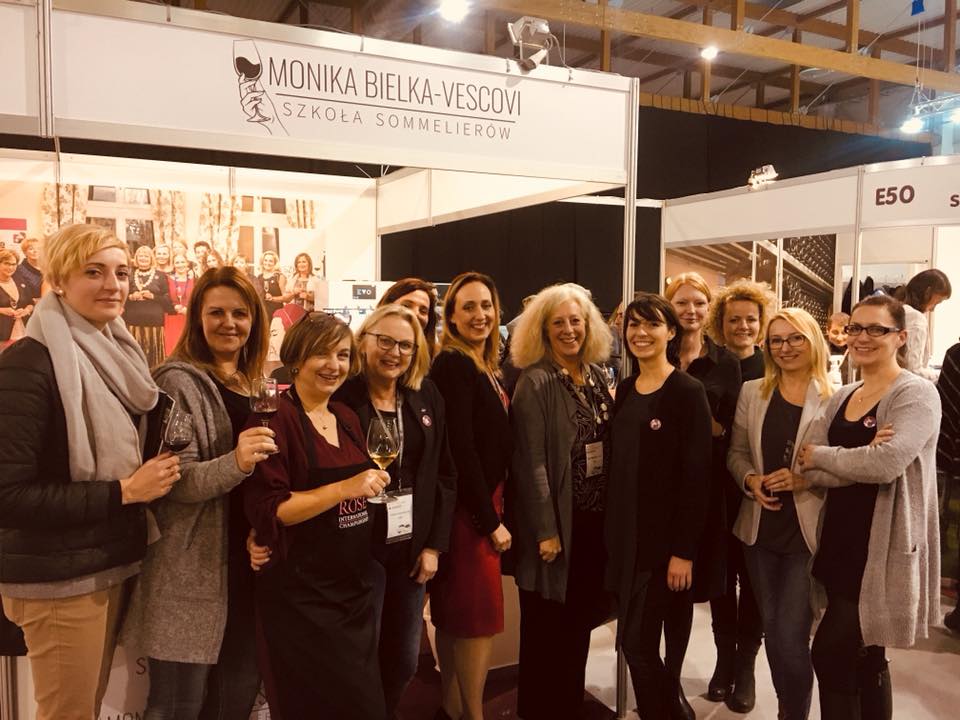
At the Enoexpo in Kraków, with Monika to my left
One could ask: what is Polish wine? Never had it, never heard about it!
But Polish wine-making has long history dating back to the 10th century. The first Polish wines were made on Wawel hill in Kraków, located in the south of Poland in Lesser Poland Vojevodship.
But Polish vine growing and wine-making has long history dating back to the 9th century. The first records of Polish vines come from Wawel hill in Kraków, located in the south of Poland in Lesser Poland Vojevodship from the 9th and 10th centuries and winemaking there was booming in the 12th century. However, Polish botanist Władyslaw Szafer found fossil vine seeds in the Wieliczka salt mine dated back to Miocene age.
The 13th century saw great prosperity in Polish wine-making lasting up to the 16th century when average temperatures started to decrease, and wars harmed Poland. Later on, wines were brought to Poland via trade routes between Hungary and Poland. Hungary’s warmer climate allowed for a steady supply of good quality wines to meet most demand. However, it was not the cooler climate that stopped Polish wine-making, or phylloxera, or even the Second World War (although that had a tremendous influence), but communism.
The communist system destroyed quality and ushered in a whole sea of mediocrity to wine-making and directing the distilling business to grow under the government’s open arms while wine-making was forgotten and pushed aside for a few decades. In countries like Hungary, the grape fields in Tokaj were ordered to be ploughed-under and planted with crops by bureaucrat decree.
Fortunately, about 30 years ago there came a man to Poland who changed it all: Roman Myśliwiec; known as the Polish Bacchus. He started planting grapes in Sub-Carpathian area in the south of Poland, at the foothills of the mountains. He started experimenting with PiWi’s (fungus resistant varieties, back then known as hybrids) and finding perfect sites for wine-making. Myśliwiec specialized in grape cultivation and for many years he has been a guiding light to many Polish winemakers.
Myśliwiec was awarded the Order of Polonia Restituta by the Polish president for his vital contribution to the development of Polish wine-making. Today he has passed his work on to his son and daughter, and runs the Sub-Carpathian Wine Academy where he and his business partner Ewa Wawro teach the new generation of Polish winemakers.
You might wonder where is the rosé is in all of this? Well as you can see it was not all pink to start with. But today Polish wines, especially rosé, are on the rise. Why is that? Poland is located between 49 and 54 ° latitude in north of equator and as you can imagine it is a bit far north for making great red wine. Cool climate grape varieties like Pinot Noir, Riesling and Chardonnay do well here, but only in certain sunny, south-exposed sites.

Physical map of Poland
A large amount of PiWi’s are grown in Poland. Red wines need particularly great weather conditions throughout the year to make good wine. Most years, however, are not great. In years too cold, too wet, or lacking sunshine, it is better to make good quality rosé than poor red wine.
About five years ago, there were few, if any, rosés made in Poland. Pink was not a colour of choice and customers wanted to drink red wines. Polish consumers prefer fuller body, ripe oaked reds usually from warmer climates like Italy, and cool climate Polish red wines can never match up to these expectations. Polish red wines, when done well, are unique, with lighter body, higher acidity and delicate red or dark fruit aromas depending on grape variety.
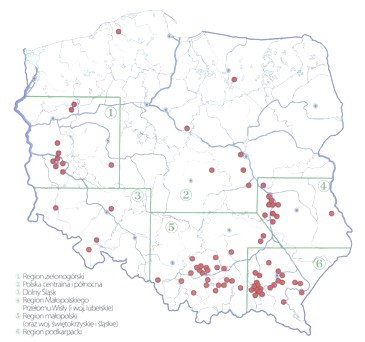
Wine Regions in Poland in 2013 (Wine tourism in Poland W.I.N.E. Project by Aleksander Sucharda)
At an annual winemakers conference in Poland, organised by the Polish Institute of Wine and Vines, Polish winemakers can present their wines to the panel and listen to harsh, at times, judgement of quality and their wine-making skills. The panel of judges, myself included, have started pointing out that instead of making poor or drinkable red wine it could be wiser to make an excellent quality rosé. It took some time for winemakers to take it to their hearts, but eventually rosé wine-making became trendy. Not only did this work quality-wise, but it quickly happened that their fresh, lighter body fruity rosés sold out fast, giving a quick return on investment.
There is a tendency amongst winemakers to produce off-dry to semi-sweet rosés. Market research shows that Polish consumers prefer wines with some residual sugar. But there is a trend for all Polish wines to become drier each year, with less skin contact and paler in colour.
The primary challenge with rosé production is the sale price point. Most of the consumers are willing to pay more for a bottle of Polish red wine than a bottle of rosé, so this is a hard choice for a winemaker with 1-4 ha of vines. A lot of winemakers in Poland still treat wine-making as a hobby and keep their regular jobs to provide for family and to invest in the winery, with a few notably exceptions such as Winnica Płochockich.
Most Polish rosés are made with Rondo, Regent, Maréchal Foch, Zweigelt, Leon Millot – red grape varieties that do well in Polish climatic conditions.
There is however one exception, a Merlot rosé made by one of the best Polish winemakers Agnieszka Wyrobek-Rousseau from Winnica Wieliczka. Agnieszka studied oenology at the University of Montpelier and used to work as a flying winemaker until she recently settled in her native Poland. She decided to plant vitis vinifera only and has also implemented biodynamic principles into her vineyard management and wine-making. She has now produced her third vintage.
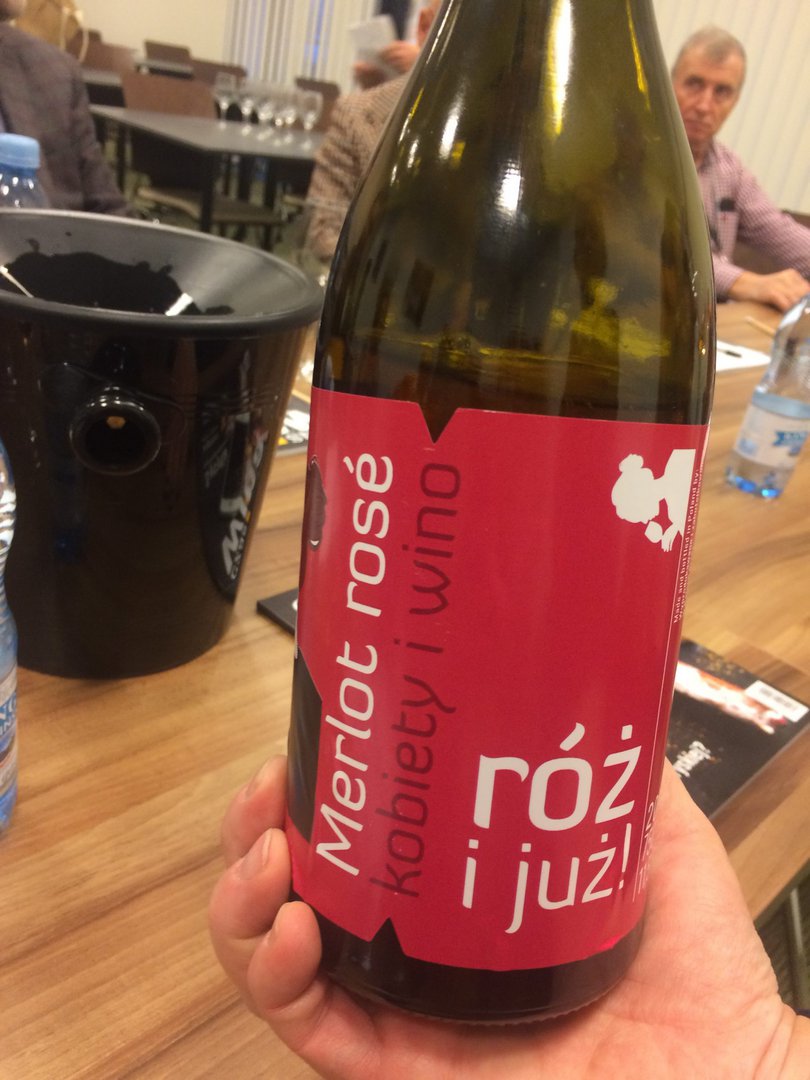
Merlot rosé from Agnieszka Wyrobek-Rousseau
Last year Agnieszka decided to make a Merlot rosé. As this was her first experiment with rosé at the newly established winery, she made it a medium-dry style with 15 g/l of residual sugar and 7 g/l acidity. Gentle raspberry notes and hints of minerality, with fermentation stopped just at the right time to keep delicate freshness of fruit on with perfect balance of sweetness and acidity on the palate. We have chosen this wine for 2017/2018 flagship wine of Women and Wine Association. The association changes wine each year, but this was the first time we chose a rosé. It is hard to escape the association of pink colour with females, especially as pink was the colour that started the pink revolution in the USA. Pink became a colour of women’s freedom. Unfortunately, later the pink colour took a wrong turn, in both culture and wine. Popularity of White Zinfandel ruined the good image of rosé and Barbie took over colour pink. Well, those times are gone.
It took several years to overcome the obstacles of association of colour, but in today’s world we tend to drink lighter, fresher styles of wine and rosé is just that. You will find rosés made throughout Poland, from West Pomeranian and Lubuskie via Lower Silesia to Lesser Poland, Sandomierskie and Subcarpathia.
One of the best, in my opinion, is made around Sandomierz, particularly Zweigelt from Winnica Modła – light pale colour, dry, with fresh raspberry and wild strawberry notes and refreshing acidity. The other two are made in the same area at Winnica Płochockich.
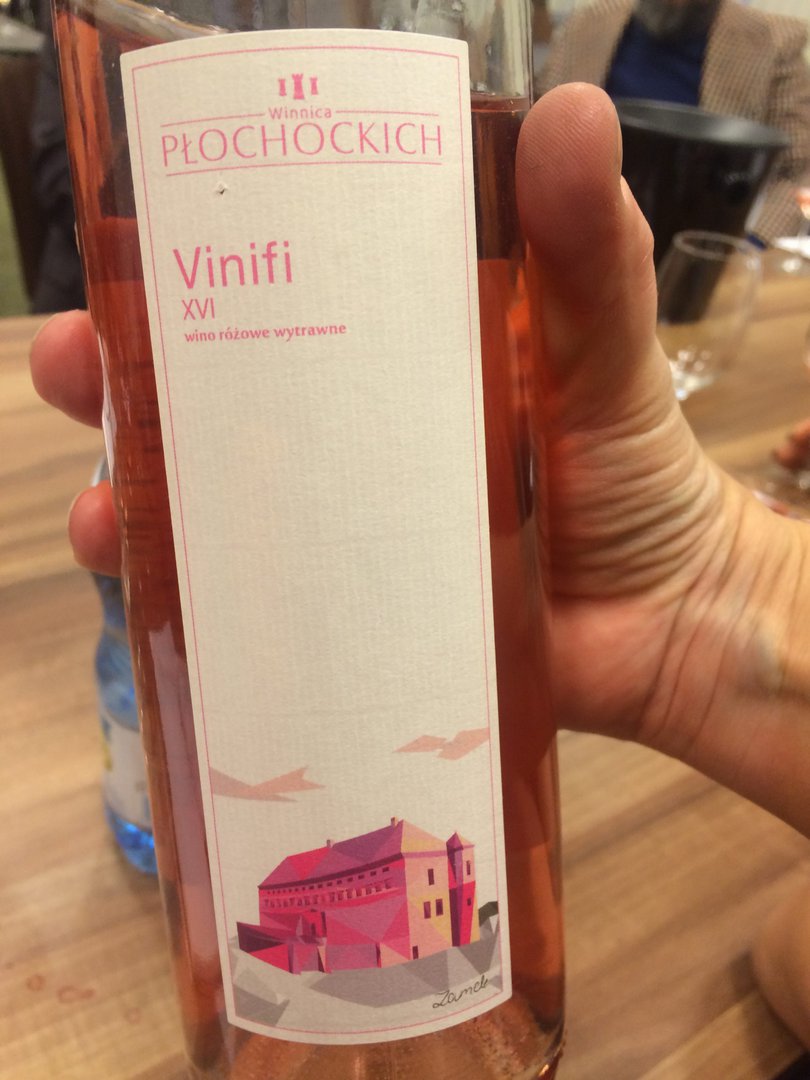
One of the two rosés from Winnica Płochockich Another notable rosé is made in Jura Krakowsko Częstochowska in the Lesser Poland region in Winnica Kresy, made with Rondo and Regent grape varieties. I find both the label and the wine's name very attractive – Jura Róż! – whose name comes both from the region name, as well as Jurassic geological era when the outcrops of limestone typical to this area were created. To give his concept even more unity, the producer uses old original photographs as his labels that he sources often from the antique market in Kraków, Poland. About two dozen rosés are made in Poland today and new producers with fresh new ideas keep showing up every year. Rosé wines have become a fixture and sales of this category are growing by 5% growth each year. It seems that red is a new pink in Poland and with cool climatic conditions making delicious rosés, instead of drinkable reds, is the best way to be rebellious and start a revolution. Discover more about Polish wine here.
Monika Bielka-Vescovi
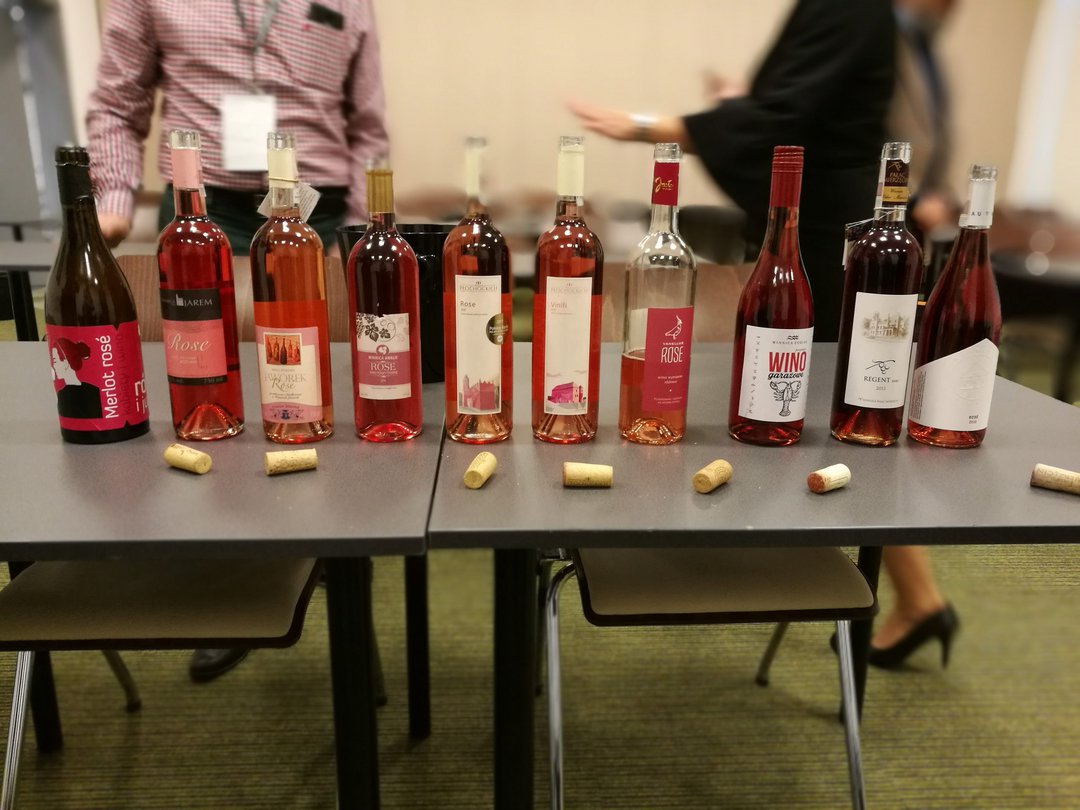
Tasting of Polish rosés at the Kraków Wine Fair
2. Tasting Notes from 17 November 2017 Tasting of Polish Rosés
At the Kraków Wine Fair, I tasted a wide range of rosé wines from Polish producers. Here are my observations on the wines I tasted. Before starting the tasting, I asked if there was a ‘Polish rosé style’. This question was greeted with some surprise. As Polish rosé is a very new phenomenon, and it is impossible to declare a style. However, a style did become evident in this small tasting:
- The cool northern climate produces high, fresh acidity.
- Arrested fermentation to retain residual sugar results in low alcohol wines.
- Residual sugar – ranging from 8 to 22 g/l results in wines which, at best, have pronounced fruit character. Those with sugar levels at the upper end of the scale rely on very high acidity to maintain a balanced freshness.
- A wide range of varieties are used but the fruit spectrum (apart from the one Merlot wine) focuses on strawberries, cherries, raspberries and redcurrants.
- The acidity ranges from fresh citrus notes to green leafy character.
- Colour ranged from dark pink to pale salmon (international style).
- The darker pink colour reflects the vibrant fruit character of most of these wines. I preferred those with around 8 to 10 g/l sugar – enough to emphasise the fruit and retain balance with the acidity. Those with extra complexity with some creaminess and weight were interesting.
Elizabeth Gabay MW